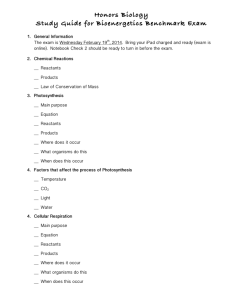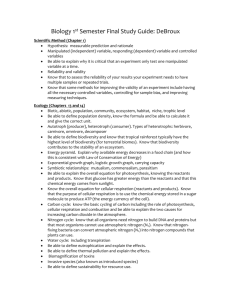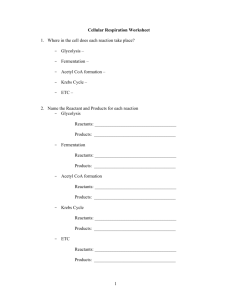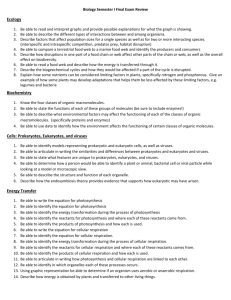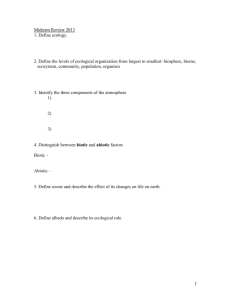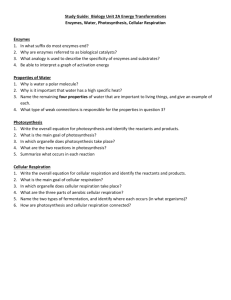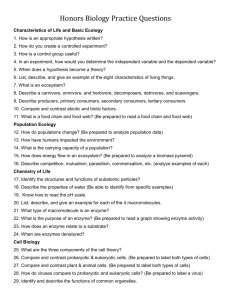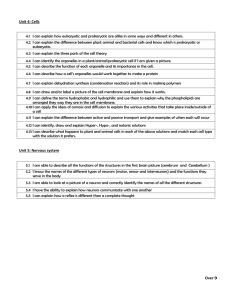Biology Unit 2 Exam Study Guide
advertisement
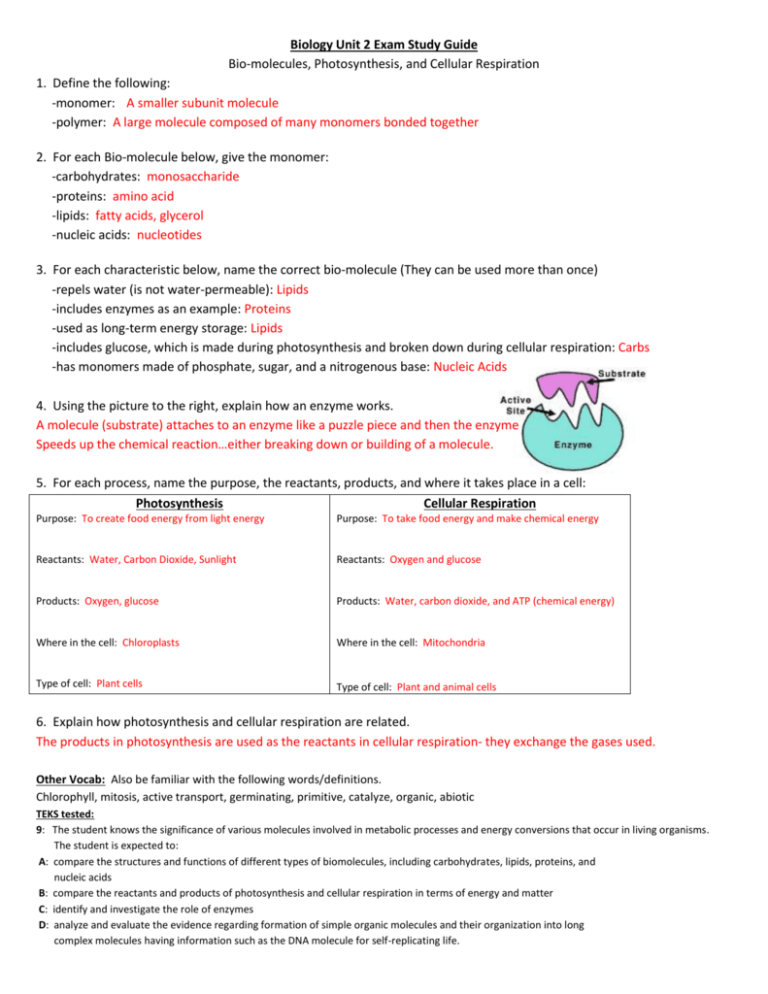
Biology Unit 2 Exam Study Guide Bio-molecules, Photosynthesis, and Cellular Respiration 1. Define the following: -monomer: A smaller subunit molecule -polymer: A large molecule composed of many monomers bonded together 2. For each Bio-molecule below, give the monomer: -carbohydrates: monosaccharide -proteins: amino acid -lipids: fatty acids, glycerol -nucleic acids: nucleotides 3. For each characteristic below, name the correct bio-molecule (They can be used more than once) -repels water (is not water-permeable): Lipids -includes enzymes as an example: Proteins -used as long-term energy storage: Lipids -includes glucose, which is made during photosynthesis and broken down during cellular respiration: Carbs -has monomers made of phosphate, sugar, and a nitrogenous base: Nucleic Acids 4. Using the picture to the right, explain how an enzyme works. A molecule (substrate) attaches to an enzyme like a puzzle piece and then the enzyme Speeds up the chemical reaction…either breaking down or building of a molecule. 5. For each process, name the purpose, the reactants, products, and where it takes place in a cell: Photosynthesis Cellular Respiration Purpose: To create food energy from light energy Purpose: To take food energy and make chemical energy Reactants: Water, Carbon Dioxide, Sunlight Reactants: Oxygen and glucose Products: Oxygen, glucose Products: Water, carbon dioxide, and ATP (chemical energy) Where in the cell: Chloroplasts Where in the cell: Mitochondria Type of cell: Plant cells Type of cell: Plant and animal cells 6. Explain how photosynthesis and cellular respiration are related. The products in photosynthesis are used as the reactants in cellular respiration- they exchange the gases used. Other Vocab: Also be familiar with the following words/definitions. Chlorophyll, mitosis, active transport, germinating, primitive, catalyze, organic, abiotic TEKS tested: 9: The student knows the significance of various molecules involved in metabolic processes and energy conversions that occur in living organisms. The student is expected to: A: compare the structures and functions of different types of biomolecules, including carbohydrates, lipids, proteins, and nucleic acids B: compare the reactants and products of photosynthesis and cellular respiration in terms of energy and matter C: identify and investigate the role of enzymes D: analyze and evaluate the evidence regarding formation of simple organic molecules and their organization into long complex molecules having information such as the DNA molecule for self-replicating life.

